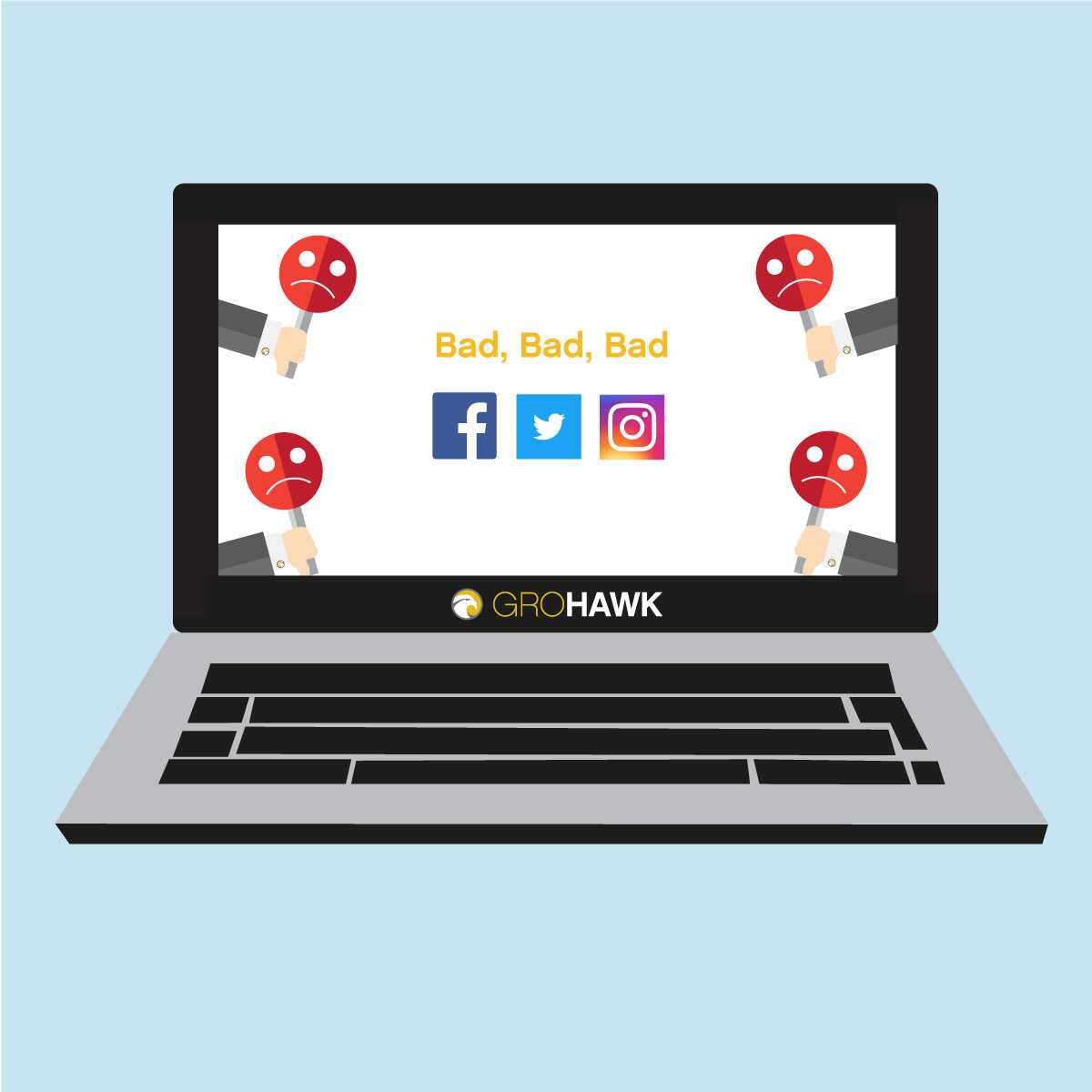10 Jun

In this highly-competitive business landscape, companies are continually searching for new ways to compete with other companies. Staying ahead of others helps you increase your market share and boost up the profits.
Providing exceptional Customer Experience (CX) remains one of the top methods to gain a competitive edge over others.
Leading companies such as Apple, Amazon, and Netflix have mastered the art of providing excellent customer experiences to their customers. It’s almost inevitable that they were to achieve all this success with the unrelenting focus they placed on delivering for their customers.
Truly customer-centric companies never undermine the importance of collecting customer feedback. Instead, they rely heavily on customer feedback to measure their performance and direct future evolutions of their products.
How to Design Survey Questions?
Right. So you’ve decided you want to survey your customers, but you’re unsure of how to get your first survey setup?! Not to worry we will outline the key steps here.
(P.s. GroHawk comes pre-built with survey templates which you can select and send out right away! So need to sit for hours or days crafting new ones).
The questions you put in a survey play an essential role in getting valid answers and gaining maximum benefit out of your survey results.
There are endless choices of questions and picking the right ones can be challenging. In particular, keeping a balance of the right kinds of questions is essential.
In this blog, we will be talking about the various types of survey questions you should and should not consider having in your survey forms.
Types of Survey Questions
There are many types of questions that could be used in surveys that we must be aware of. The first category to understand when and how to use Open vs Closed Questions. Let’s take a look…
Closed Questions
Closed questions are those where respondents can choose from a set of predefined answers provided. They cannot add their ideas, opinions or any options to the list.
Here’s an example:
Which colour do you like the most?
- Pink
- Blue
- Green
- All of the above
- None
Open-Ended Questions
Open questions allow participants to write an answer freely. These types of questions do not restrict customers and usually have a free text entry box for respondents to share their answer. Here’s an example:
Q: Please give us the reason for your score.
Biased vs Unbiased Questions
The next category of questions we must be aware of is biased versus unbiased questions.
What are Biased Questions?
Biased Questions are those which influence a respondent’s answer. The question you ask can greatly impact the answers you receive – this is called bias. For an impartial set of responses, it’s critical that we try to minimise the amount of bias we have present in our surveys.
Sometimes, biased questions can be added intentionally, but in the majority of cases, it tends to be due to poor choice and design of the survey form. Here are a few examples of Biased Questions:
Q: Why is eating junk food bad for you?
Q: Why do humans get irritated by the humming of birds?
What are Unbiased Questions?
Unbiased questions are those which do not influence a respondent’s answer. These types of questions do not lead anyone towards a particular answer. Hence, they reduce the amount of bias built into your survey.
The goal while designing carefully crafted survey forms should be to make it as easy as possible for the customers to think and fill in their responses.
Here’s how we can rephrase the above mentioned biased questions to make them unbiased:
Q: Do you think that eating junk food is bad for health?
Q: Do you get irritated by the humming of birds?
Now that we have differentiated between biased and unbiased questions, let’s take a look at what type of questions could create unintended bias in your survey forms.
Leading Questions
Questions that lead participants in a particular direction while answering are called Leading Questions. These may greatly compromise the validity of your survey results. Here are some examples of leading questions:
Q: How lazy do you feel after eating fast food?
Instead, the correct way of asking the same question is:
Q: Do you feel any difference in your energy levels after consuming fast food?
Leading questions may create bias among respondents. For example,
Q: Do concerned parents send their children to daycare?
This question has the potential to annoy a few respondents. Instead, a better way to ask the same question is:
Q: Do you think children should be sent to daycare centres?
Loaded Questions
Loaded questions are questions which force people to provide an answer in a specific way. Respondents don’t have an opportunity to express their opinions freely. Hence, they may lead a few respondents just to abandon the survey or produce unclear results.
Here’s an example of a loaded question:
Q: Which pets are you most likely to own?
Well, what if the respondents don’t like to keep pets or have no intention to keep a pet?
As reflected in the examples, loaded questions force people to give answers that do not necessarily reflect their opinion. Perhaps, you could ask the same question in the following way to remove the bias and get valid survey results.
Q: Are you interested in adopting pets? If so, which?
The Double-Barreled Questions
Double-barreled questions are one of the most prevalent survey mistakes we see companies making. These questions require multiple answers for one question.
For example,
Q: How would you rate our taste and ambience?
Now, most respondents will focus on either taste or ambience. The goal is for customers to provide information related to both. Hence, consider asking two separate questions. The rule for accurate survey results is One Subject per One Question.
Q: How would you rate the taste of your food today?
Q: How would you rate our ambience today?
Asking two distinct thoughts in two different survey questions creates no confusion among the respondents and makes the survey results clearer for you to understand and interpret.
Absolute Questions
Questions which require strict Yes/No answers are termed as Absolute Questions.
Let’s say, you sell fragrant body soaps. In your survey form, you may ask customers about their preference.
Q: Do you always use body soap in the shower?
A Yes/No answer will not show user preference. To gain better insights, you could consider asking:
Q: Do you prefer using body soap or shower gel?
- Body Soap
- Shower Gel
- No Preference
Now, this way your respondents have some options and they may as well tell you which kinds of soap they prefer. This way you have reduced bias whilst increasing the validity of your survey result.
The Unclear Question
Many questions remain unclear to respondents which makes them uncomfortable and even annoyed.
If you want clear answers to analyse it’s imperative that you ask clear questions first. Don’t leave any room for differences in interpretation or ambiguity.
Acronyms, jargon and terminology not known to the layperson and may create bias in your survey forms. Consider asking clear questions free of jargon or terms which can be misunderstood by your respondents.
Here are some examples:
Q: Are B2B companies more profitable than B2C?
Now this question might seem relevant to people with business backgrounds, but on a broader level, it creates bias among people who do not understand what B2B or B2C is. Whilst this is fine if you are sure that your target audience is aware of these abbreviations, it’s better to practice to spell it out in case certain people misinterpret the shorthand.
Take away TIPS for writing better survey questions

Be neutral
Keep the tone and wording of your questions neutral. Avoid being robotic in the tone of your messages. Don’t make assumptions about the users’ preferences, let them express their opinions without bias.
Avoid using jargon
Use of jargon makes respondents uneasy. Asking questions that your audience may not understand is not a smart idea. If you must use jargon, be sure that your audience is aware of the terms you are using.
Don’t make all questions compulsory to answer
Making all questions mandatory to answer may scare away respondents even before they start! Let respondents give answers to as many questions as they like. A little is better than nothing!
Set the right balance
Having the right balance of open-ended and closed-ended questions is necessary. Both kinds of questions have their advantages and disadvantages. You can make your survey form much more comfortable to complete if you set the right balance.
Ask mobile-friendly questions
As per Statista, up to 53% of web traffic is generated through mobile phones which means most people are comfortable completing surveys through their mobile phones. Hence, it is imperative that extra attention is given while designing the surveys so that the format is compatible with small-sized smartphone screens.
Moving the sliders and entering dates from a built-in mini calendar is quite a turn-off when customers are conditioned to go through such tedious tasks. To reduce the chances of survey abandonment, make sure you have all the following in check:
- Use MCQs
- Limit the number of questions – only ask the absolute important ones
- Don’t make more than two questions appear on the screen at a time
- Embed a progress bar at the bottom
- Create a user-friendly layout and test it on various mobile models
- Use readable font type and size
- Provide a shortened URL that can be shared easily
See what others think of your survey

Just like proofreading is required before submitting a final thesis, surveys also require plenty of checks and testing before sending them out to customers. It’s better to spot bugs and errors in an internal quality check rather than having customers complain about the same.
After passing the survey from the quality check department, send the link to your colleagues and other employees to see if the survey is working fine. Ask them if they faced any difficulty filling the form so that you can make the survey even more effortless.









2 Comments
soundcloud music downloader
Can you tell us more about this? I’d like to find out some additional information.
Daniel
This is my first time pay a quick visit at here
and i am actually pleassant to read all at one place.|